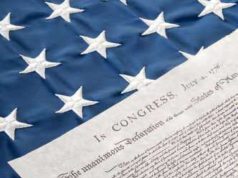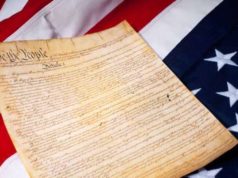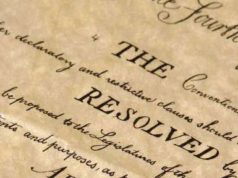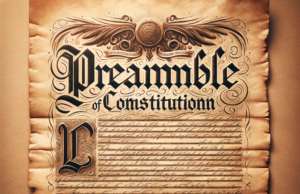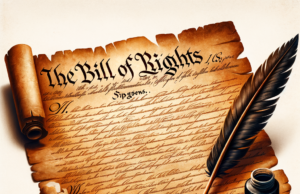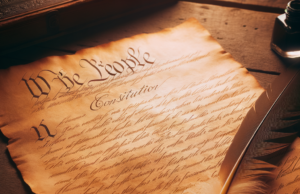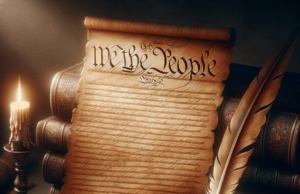Table of Contents
- 0.1 The Federalist Papers: Reflections on Representation and Legislature
- 0.2 Representation in the Federalist Papers
- 0.3 The Legislature in the Federalist Papers
- 0.4 Conclusion
- 0.5 Introduction:
- 0.6 The Federalist Papers and Separation of Powers:
- 0.7 The Federalist Papers and Checks and Balances:
- 0.8 The Federalist Papers and US Politics:
- 0.9 The Federalist Papers and the Legal System:
- 1 Ten Important facts about the Federalist Papers:

The Federalist Papers: Reflections on Representation and Legislature
Representation in the Federalist Papers
The Legislature in the Federalist Papers
Conclusion
Introduction:
One of the primary aims of the United States of America’s founding fathers was to establish a government that prevented both the tyranny of a single individual and the tyranny of the majority. In this regard, the Constitution of the United States has incorporated the principles of separation of powers and checks and balances. The Federalist Papers, a series of 85 essays published by Alexander Hamilton, James Madison, and John Jay between 1787 and 1788 in support of the ratification of the US Constitution, played a significant role in promoting these two principles. In this article, we will examine the Federalist Papers and explore how they influenced US politics and the legal system.
The Federalist Papers and Separation of Powers:
The concept of separation of powers is rooted in the idea that power corrupts, and absolute power corrupts absolutely. Thus, to prevent the concentration of power in any one person or group, the US Constitution divided the powers of government into three branches: the legislative, executive, and judicial. The legislative branch, Congress, is responsible for making laws. The executive branch, headed by the President, is responsible for enforcing laws. The judicial branch, comprising the Supreme Court and other federal courts, is responsible for interpreting laws.
In The Federalist Papers, Hamilton, Madison, and Jay argued that separation of powers was essential to prevent tyranny and to safeguard liberty. They wrote that “the accumulation of all powers, legislative, executive, and judiciary, in the same hands, whether of one, a few, or many, and whether hereditary, self-appointed, or elective, may justly be pronounced the very definition of tyranny” (Federalist No. 47).
The writers of The Federalist Papers recognized the potential for the three branches of government to conflict with each other as they pursued their separate interests. However, they viewed this competition as a positive development because it would prevent any one branch from becoming too dominant. The Constitution provided each branch with the power to check the other two. For example, Congress can override a presidential veto with a two-thirds majority vote. The President can veto a bill passed by Congress. The Supreme Court can declare acts of Congress or the President unconstitutional.
The Federalist Papers and Checks and Balances:
The concept of checks and balances is closely related to the principle of separation of powers. Madison, in Federalist No. 51, wrote that “in framing a government which is to be administered by men over men, the great difficulty lies in this: you must first enable the government to control the governed, and in the next place oblige it to control itself.”
The Constitution provides several examples of checks and balances. For example, the House of Representatives has the “power of the purse,” meaning it controls the government’s budget. Without funding, the other branches cannot function effectively. Similarly, the President has the power to nominate judges to the federal courts, but the Senate has to confirm those nominees. The Senate can also impeach and remove the President from office.
The Federalist Papers and US Politics:
The Federalist Papers played a significant role in shaping US politics. During the ratification process, the authors used the essays to persuade the public to support the Constitution. They argued that the Constitution would create a strong but limited government that would respect individual rights and liberties.
The Federalist Papers are still relevant in US politics today. Politicians and policymakers often refer to them to support their arguments on issues such as the separation of powers, federalism, and the role of the judiciary. In this sense, the Federalist Papers continue to influence American political thought and practice.
The Federalist Papers and the Legal System:
The Federalist Papers have also had a significant impact on the legal system of the United States. They are often cited in court opinions and legal briefs on issues related to constitutional law.
For example, in the landmark case Marbury v. Madison (1803), Chief Justice John Marshall relied on the Federalist Papers to support the principle of judicial review. Judicial review is the power of the courts to declare an act of Congress or the President unconstitutional. In Federalist No. 78, Hamilton wrote that the judicial branch is the “least dangerous” branch because it has “neither force nor will but merely judgment.” Marshall expanded on Hamilton’s ideas and used them to justify the Supreme Court’s power to interpret the Constitution and strike down laws that violate it.
Ten Important facts about the Federalist Papers:
- The Federalist Papers were a series of essays published between 1787 and 1788 in support of the ratification of the US Constitution.
- The papers were written by Alexander Hamilton, James Madison, and John Jay and were collectively known as The Federalist Papers or The Federalist.
- The Federalist Papers are still regarded as one of the most important works on political theory and American government.
- The primary aim of the Federalist Papers was to persuade the public to support the Constitution and its principles, including the separation of powers and checks and balances.
- The Federalist Papers argued that separation of powers was essential to prevent tyranny and safeguard liberty.
- The writers of The Federalist Papers recognized the potential for the three branches of government to conflict with each other as they pursued their separate interests.
- The Constitution provides each branch with the power to check the other two.
- The Federalist Papers played a significant role in shaping US politics during the ratification process and continue to be relevant today.
- The Federalist Papers have had a significant impact on the legal system of the United States and are often cited in court opinions and legal briefs on issues related to constitutional law.
- The Federalist Papers continue to be an important resource for scholars, politicians, policymakers, and citizens interested in American government and political theory.
Conclusion:
The Federalist Papers are a crucial resource for anyone interested in American government, politics, and constitutional law. The papers provided a compelling argument for the principles of separation of powers and checks and balances, which continue to shape US politics and the legal system. The papers played a crucial role in persuading the public to support the Constitution and its principles. The Federalist Papers have had a lasting impact on American political thought and practice and remain a vital resource for scholars, policymakers, politicians, and citizens. Overall, the Federalist Papers are a testament to the genius of America’s founding fathers and their vision of a government that safeguards individual liberties and human rights.
The precepts set forth by the Articles of Confederation rendered the American Government powerless to involve itself in matters concerning the individual legislation of any of the 13 states of the Union.
Operating as an individual, sovereign entities – as per the guidelines for the new American Government set forth by the Articles of Confederation – the 13 states of the Union were sanctioned to maintain their individual State legislative, or Congressional, bodies. Each individual and sovereign State was permitted to regulate all matters that took place within its border. As a result, amongst a nation of 13 states existed 13 separate Congressional bodies – a dynamic that nearly led to nationwide devastation.
Because no nationwide legislation existed, tariffs, trade rates, and all other taxable commercial ventures were subject to the discretion of the individual State’s Congress. Almost immediately, both domestic and international commerce came to halt as a result of erratic, and sometimes unpredictable, State-imposed tariffs and taxes. Certain states refused to engage in trade relations with others, and foreign nations were unwilling – or unable – to accommodate 13 different foreign policies.
A Federalist proposal – outlined in both the Federalist Papers, as well as The Constitution – that called for the creation of a nationally-consolidated American Government and Congress comprised of representatives from each of the 13 states of the Union was met with differing responses from each State.
Larger states with larger populations demanded their representation in the proposed national Congress to be commensurate with their respective populations. Conversely, smaller states were apprehensive about the possibility of having their sovereignty usurped in a legislative forum that would attribute power based on population. The populations of smaller states such as Rhode Island and Delaware could not have possibly competed with the population of larger states such as New York and Pennsylvania.
The Federalist Papers warned that without a nationwide Congress, the minorities could ostensibly control the majority. In order to illustrate this concern, James Madison postulated that according to the Articles of Confederation, at least 9 of the 13 states were required to pass a new piece of legislation. Therefore, 9 of the smaller states could establish an alliance in which they might all agree to vote unanimously in every Congressional hearing, thus swaying every election in the favor of the hypothetical 9-State alliance.
As a result, the Federalist Papers devised a system in which all states would be equally represented in a nationwide Congressional forum: each State, regardless of size, would be entitled to 2 senatorial representatives. This proposal not only prevented the establishment of any potential alliance but also allowed for the equal treatment of every State in the Union.
As a result of the system of Congressional representation outlined in The Federalist Papers, every State, regardless of size, was represented equally. In addition, individual State legislation was re-modified to avoid disproportionate tax and tariff rates. Larger states and their smaller counterparts would be neither penalized nor favored on account of their respective sizes.







